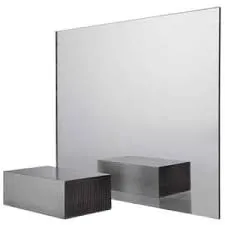

The Aesthetic and Functional Appeal of Grey Float Glass
In the world of architecture and interior design, materials play a pivotal role in shaping the environment. Among various types of glass, grey float glass has emerged as a popular choice, admired for both its aesthetic appeal and functional benefits. This article delves into the characteristics of grey float glass, its applications, benefits, and the reasons behind its increasing popularity in modern design.
What is Grey Float Glass?
Grey float glass is a type of glass that is produced through the float glass process, where molten glass is floated on molten tin, resulting in a smooth, uniform, and high-quality product. The 'grey' aspect refers to its color, which is achieved by adding specific metal oxides during the manufacturing process. This gray tint not only enhances its visual appeal but also influences its properties, particularly in terms of light transmission and thermal control.
Aesthetic Benefits
One of the primary reasons for the popularity of grey float glass is its aesthetic versatility. This glass can range from a light smoky hue to a deep charcoal tint, allowing designers to choose the perfect shade to complement their vision. Grey float glass possesses a sophisticated elegance that can enhance both contemporary and traditional spaces. It can create a sense of depth and dimension, making rooms feel more expansive while adding a touch of luxury.
Additionally, grey glass reflects and absorbs light in a unique way, creating alluring visual effects. This characteristic, combined with its neutrality, allows it to align seamlessly with various color schemes and materials, from wood and stone to bright metals. This adaptability makes it an ideal choice for a range of applications, from commercial spaces like offices and hotels to residential interiors such as living rooms and kitchens.
Functional Advantages

Beyond its visual appeal, grey float glass offers several functional advantages
. One of the most significant benefits is its ability to reduce glare. By moderating the intensity of sunlight that enters a space, grey glass helps to create a more comfortable environment for occupants. This feature is particularly advantageous in areas where significant natural light is a priority, such as conference rooms or homes situated in sunny regions.Moreover, grey float glass can help improve energy efficiency. Its tinted nature allows it to control heat gain within buildings, which can contribute to reducing the reliance on air conditioning systems. This energy-efficient quality not only lowers utility bills but also assists in minimizing the overall carbon footprint of a structure.
Applications of Grey Float Glass
The applications of grey float glass are vast and varied, attesting to its versatility. In architecture, it is commonly used in windows, facades, and skylights. Its ability to provide privacy while maintaining visibility makes it popular in both residential and commercial projects. Furthermore, grey float glass is increasingly seen in glass partitions and doors, allowing for open-concept spaces while defining areas within an interior.
In addition to architectural uses, grey float glass is also a popular choice for furniture, including coffee tables and countertops. Its reflective surface can add a sleek touch to furniture designs without overwhelming the overall aesthetic of the room.
Conclusion
In conclusion, grey float glass stands out as a premium material that skillfully combines beauty and function. Its elegant appearance, alongside its practical benefits, positions it as a favored choice among architects and designers seeking to create modern, stylish, and energy-efficient spaces. As we continue to explore innovative design approaches, it is likely that grey float glass will remain a key component in the evolution of contemporary architecture and interior design. Whether utilized in large-scale commercial projects or intimate residential settings, this versatile material undeniably adds value to any environment.